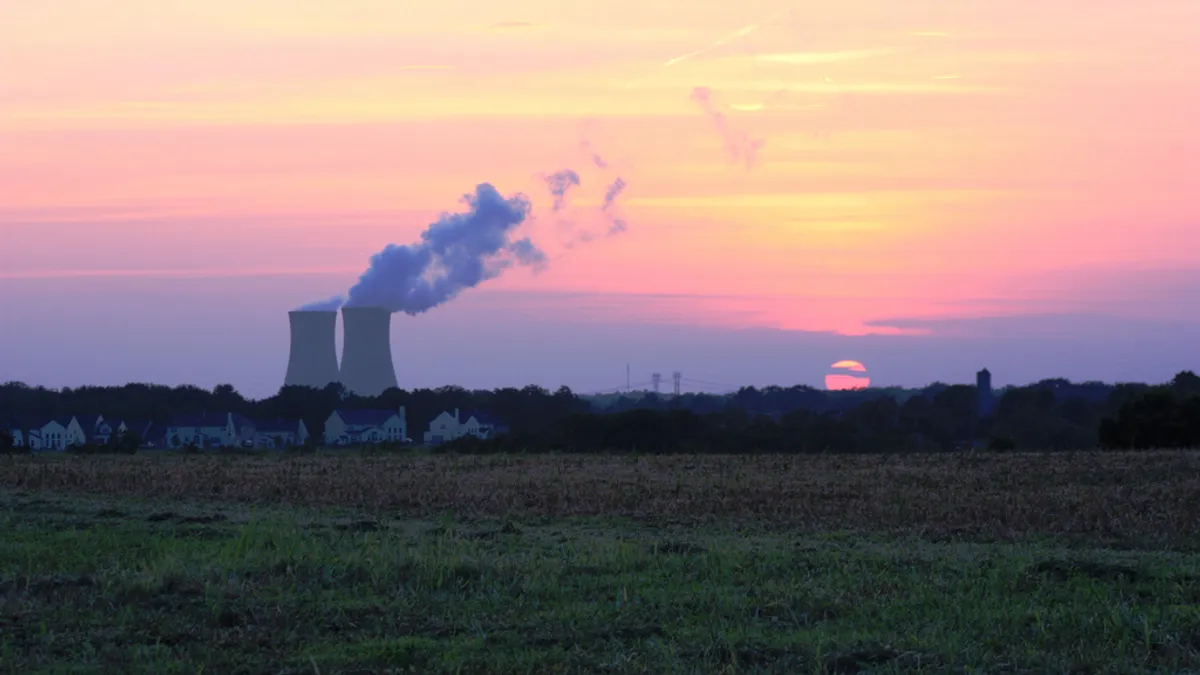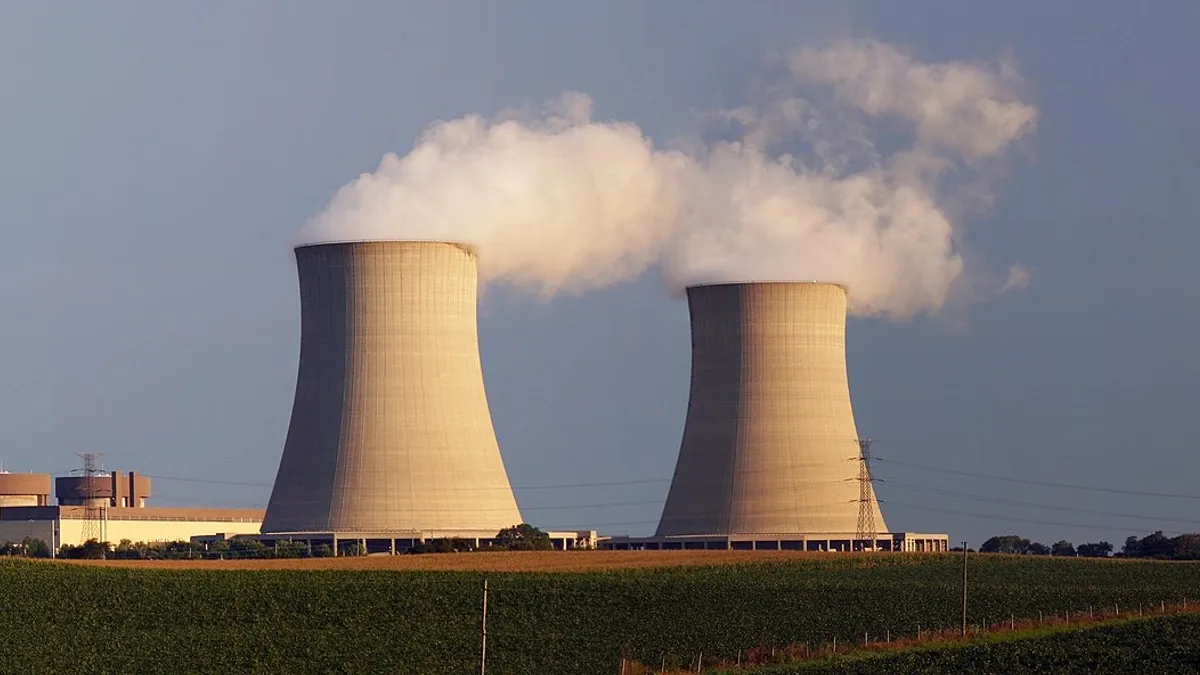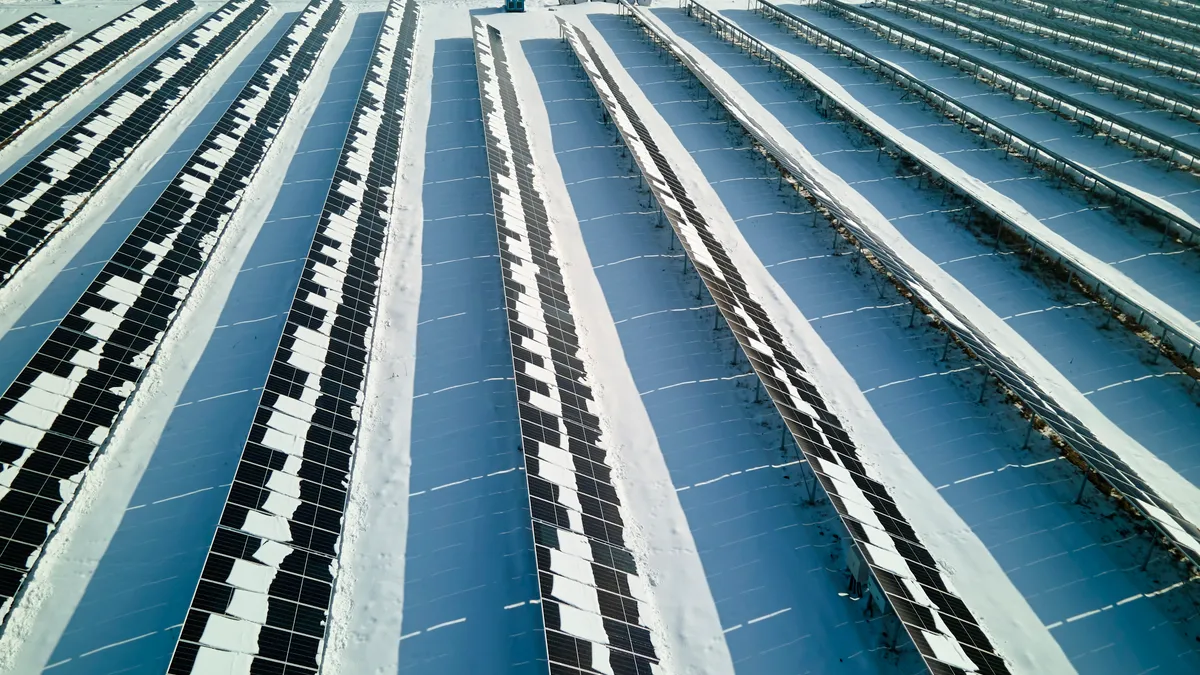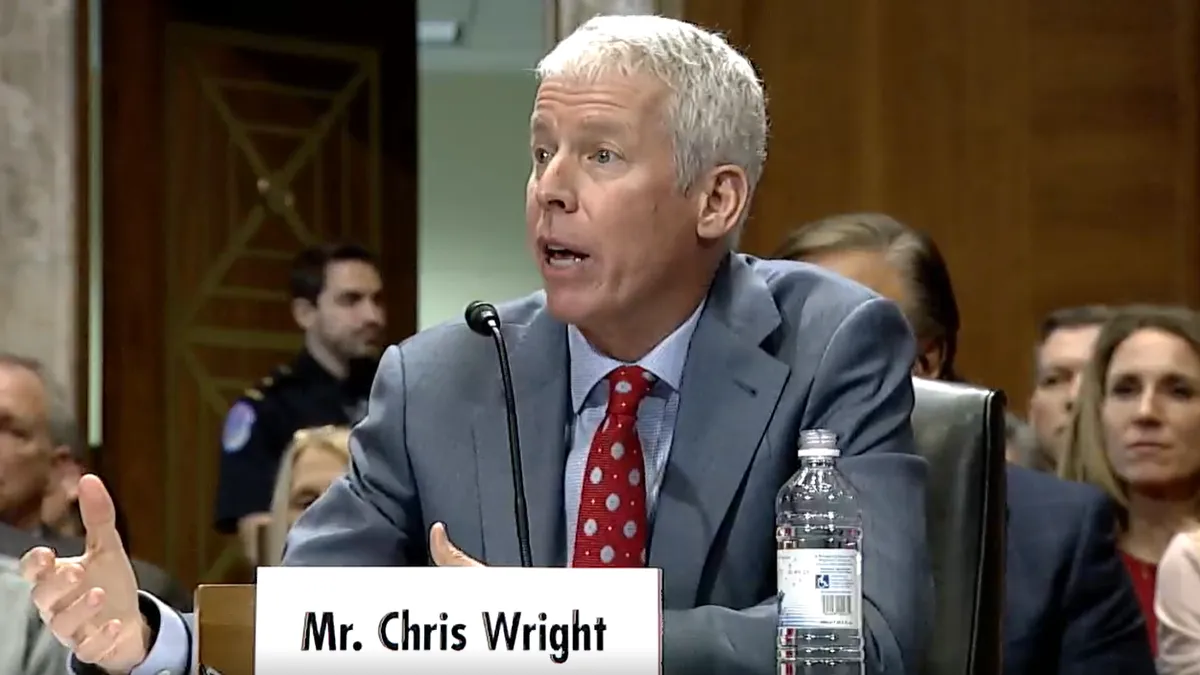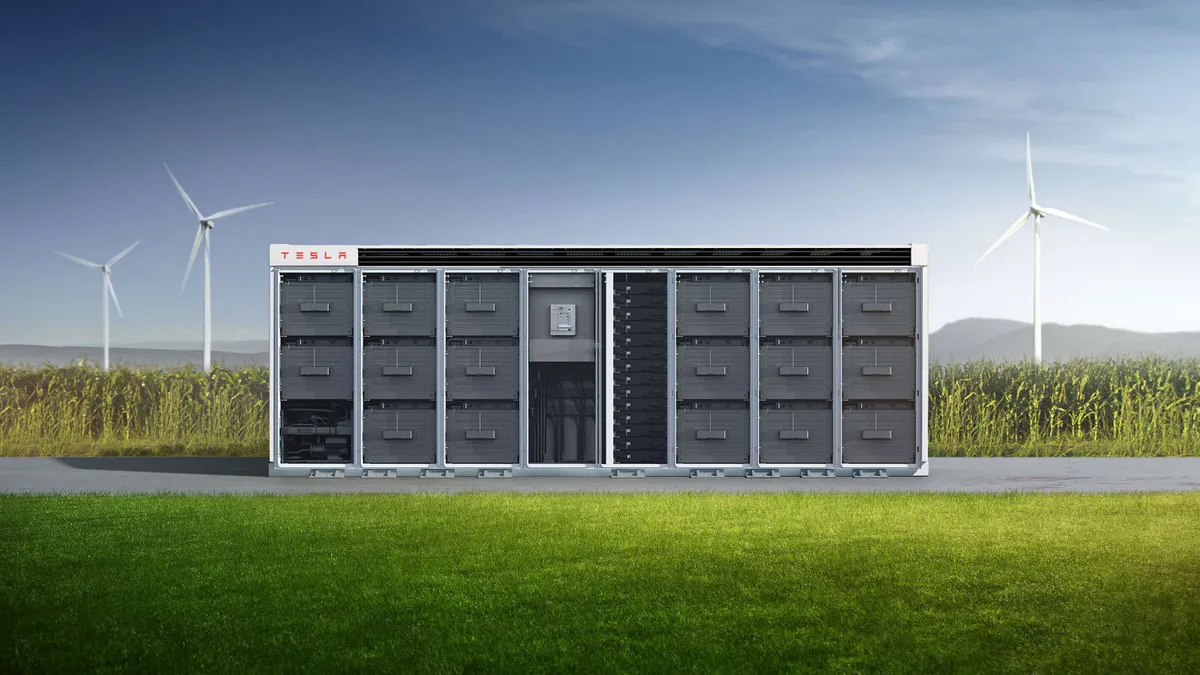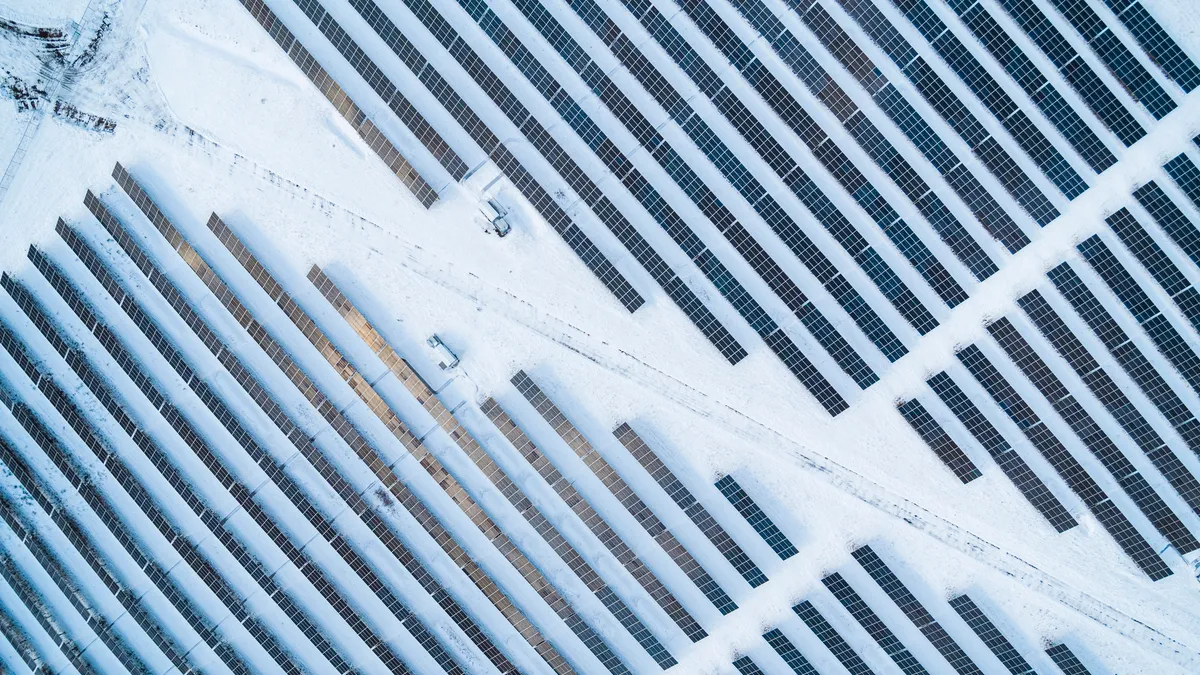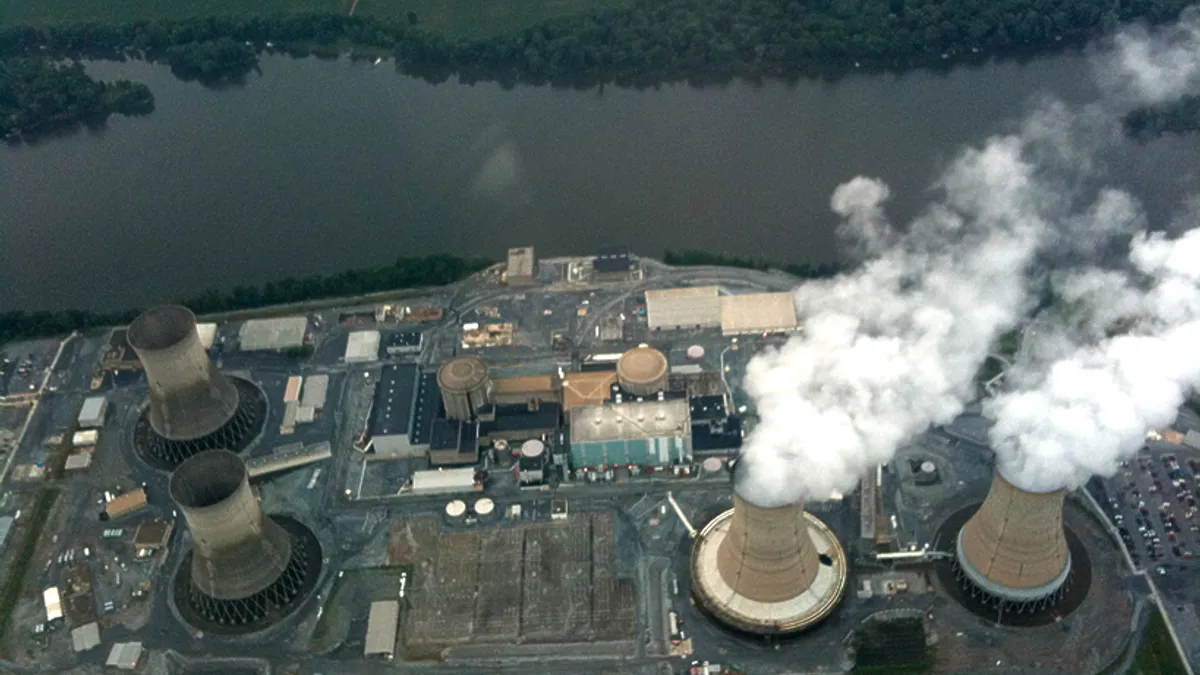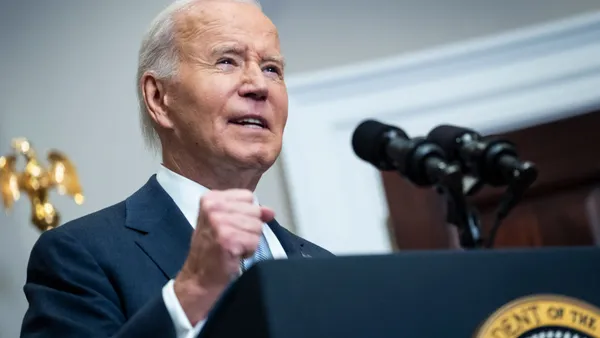For some in the energy sector, a price on carbon has long been a pie in the sky. While economists tout its efficiency and regulators love how easy it is to implement, a carbon price has always been too contentious of a political issue for anyone to think about seriously.
Unless you’re a utility regulator, that is.
Compliance with the EPA’s proposed Clean Power Plan regulations was the big topic at the first official day of winter meetings for the National Association of Regulatory Utility Commissioners (NARUC).
From the possibility of a carbon price to nuclear projects and solar financing, here are the highlights from day one.
The Clean Power Plan: Is a carbon price the answer?
There are really two routes for states to take when thinking about implementing the emissions reductions mandated by the Clean Power Plan, according to Asim Haque, vice-chairman of the Public Utilities Commission of Ohio (PUCO). The first option is to cap carbon emissions from each individual power plant. But that route is logistically difficult and could cause reliability issues, Haque said.
The second option is to identify a carbon price for regional electric markets. This wouldn’t be a cap and trade system like the regional greenhouse gas initiative (RGGI), Haque stressed. Rather, generators would have to factor in the price of carbon when they bid into energy markets, making carbon-intensive energy more expensive than low carbon resources.
That approach may seem anachronistic for those tuned into electoral politics, but not for utility regulators. Haque pointed to a PJM report released in November that found a regional price on carbon would be cheaper for states in its territory than if each state created its own compliance plan. “Less compliance cost and fewer resources at risk for retirement,” was how the Ohio commissioner summed up the research.
Haque first pushed the idea of a carbon price as a panelist in a discussion on state compliance strategies for the Clean Power Plan. But in a later session that he moderated, he asked executives from the nation’s grid operators what they thought of a regional compliance plan. Mike Kormos, executive vice president at PJM, endorsed the idea, saying compliance would work best with a price on the pollutant. That model has served well for other regulations, like the Mercury and Air Toxics Standards (MATS), he said. Clair Moeller, COO of MISO, agreed, endorsing a regional compliance approach as well.
There are still significant obstacles to putting a price on carbon pollution, Haque and other panelists stressed. For one, it’s unclear who has the authority to set such a price, whether that's a state's governor, legislature, regulators, or whether there needs to be an act of Congress.
“How you logistically get there is an authority-based question that we need to work out,” Haque told Utility Dive after the conference.
Will the Clean Power Plan impact grid reliability?
As muddy as the conversations about a carbon price may seem, they were more concrete than the discussions about grid reliability. Despite the claims by some that the regulations could cause “cascading outages” on the grid, the main takeaway from the NARUC meetings was that even the experts wouldn’t make predictions yet.
“Do we know for sure that there are going to be reliability concerns?" Haque said. "Admittedly we do not know that yet.”
Only once the final rule is approved and states create their compliance plans will we know about reliability, executives from PJM, NERC, MISO and WECC agreed. But they did coalesce around one point: The sharp reductions in emissions — the “compliance cliff” — required in the first year of the Clean Power Plan is likely to be problematic.
Given enough time to upgrade transmission and generation infrastructure, PJM and MISO don’t anticipate reliability concerns. But the current proposed timeline presents some issues for both grid operators, setting up a difficult race between planned plant retirements and other compliance strategies. EPA officials have hinted at changes to the timeline, but no announcement has materialized yet.
Is there something wrong with solar's lease deals and sales tactics?
Panels discussing the Clean Power Plan were packed with observers all day, perhaps only matched by the standing room-only crowd for the discussion on renewable energy finance. With two executives from major solar installers on hand, it was an opportunity for a dialogue on some of the more contentious solar policy issues.
One observer asked the panel about allegedly abusive financing practices. Late last year, a group of Arizona Congressmen sent a letter to the Consumer Financial Protection Bureau and Federal Trade Commission outlining concerns with the marketing tactics and lease deals of some third party-owned solar installers.
Concerns about financing mostly have to do with small upstart solar installers, said John Stanton, vice president for policy and electricity markets at SolarCity. Big companies like SolarCity, Clean Power Finance or First Solar are under too much public scrutiny for abusive financing practices.
James Tong, vice president of strategy and government affairs for Clean Power Finance, reminded the audience that the market would force out installers with questionable financing practices over time. In such a competitive industry, the bad companies just won’t last. “Private parties are subject to market discipline as well,” he said.
Southern Co.'s big nuclear plans
While the EPA's Clean Power Plan has generated a lot of enthusiasm among the clean energy crowd, the folks in the U.S. nuclear industry walked with a spring in their step on Monday as well.
With the nation’s electricity sector turning toward decarbonization, utilities see opportunities to maintain and even expand their nuclear fleets. If you want to be serious about climate change, former Indiana Sen. Evan Bayh told the crowd as he kicked off the meetings, “nuclear power has to be part of the solution.”
The nuclear industry's brand of climate pragmatism was on full display throughout conversations at the meetings. “You cannot have a serious discussion about controlling carbon … without talking about nuclear,” said Buzz Miller, president for nuclear development at Southern Company.
Miller was at the conference to give an update on the expansion of the Vogtle nuclear plant. In January, Southern was forced to announce that construction would be delayed another 18 months, putting the completion date sometime in 2020.
“No one was surprised” by the cost overruns and delays, Miller told the conference. In fact, he said, such flexibility was written into the contracts with construction firms. It is the contractor’s delays — not Southern’s — that keep pushing the completion date back.
As for ratepayers, they stand to pay 2-3% more over current rates to finish the construction of what would be the nation’s largest nuclear plant, and the only one with four units. Those rate increases would be more than canceled out by the billions of dollars in customer savings throughout the life of the plant, Miller said.
After the panel, Utility Dive caught up with Tom Terrell, media relations manager at Southern Co. He said the Clean Power Plan has changed how they view their fuel mix.
“Our company, 4-5 years ago, we were a primarily coal generation company. Most of our output – 70% or high 60s – came from coal generation,” he said. “That’s down to less than 40% now, so we’re making that shift ... toward more natural gas and the installation of more nuclear units.”


